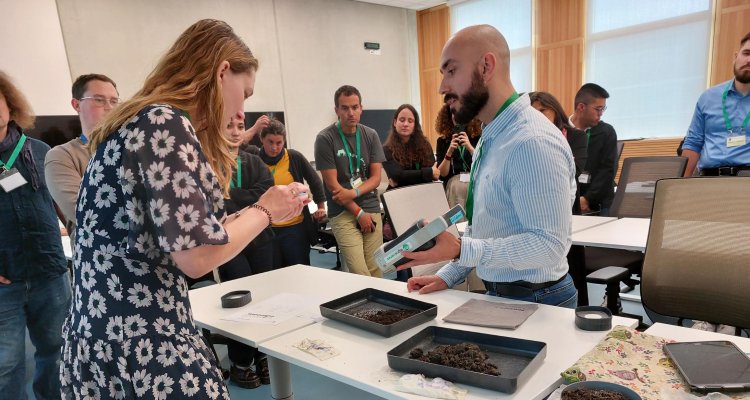
News
CO2 storage in farming soils barely helps the climate
Sequestering CO2 in farming soils is promoted as an excellent strategy to mitigate climate change. Is this actually the case, however? Several soil experts voiced their doubts during the Wageningen Soil Conference on 29 August.
Meeting the climate goals means we should not only significantly reduce greenhouse gas emissions but also sequester more CO2 in the soil. Research has taught us how to store CO2 in the ground. Stop ploughing, grow low-growing plants after the harvest, increase the amount of permanent grassland, practice agroforestry and restore wetlands. All these things increase carbon sequestration in the soil.
There is currently a lively carbon farming trade where businesses seeking to become climate-neutral buy carbon certificates from farmers who sequester additional carbon in their soils. The European Union promotes carbon farming. ‘Carbon farming is a much-needed addition to our efforts to become climate-neutral, says EU Commissioner Frans Timmermans in 2021. ‘It enables farmers, foresters and other land managers to become true custodians of our environment and climate.’
Critical comments on carbon farming
Is this a suitable method to achieve the climate goals? Not according to Carsten Paul, a researcher at the Leibniz Centre for Agricultural Landscape Research. He points out that the carbon levels are the result of both CO2 uptake and emissions. As a general rule, the higher the carbon levels, the higher the respiration and emissions. Moreover, CO2 sequestration requires decades of strict management that are lost if the farmer or his successor decides on a different type of management. These uncertainties render certificates claiming carbon sequestration by farmer S at location X unsuitable for the climate goal needs. ‘Our money would be better spent on reducing emissions’, Paul states.
Wageningen soil biologist Gabriel Moinet shares this conclusion. Storing CO2 in farming soil can contribute a maximum of 8% to the current climate goal for carbon reduction, but 4% is a more realistic estimate. Moreover, Moinet and his colleagues are critical of the frequently heard claim that CO2 sequestration is a no-regret measure that contributes to food security. Their research shows that the link between carbon sequestration and food production depends on the specific location. In some cases, storing extra carbon may even result in damage. ‘We need to shift our focus from maximising carbon storage to optimising it’, Moinet says.
These conclusions are bad news for those focusing on permaculture, organic and regenerative agriculture. Soil health is central to all these types of agriculture in an effort to generate soil health and biodiversity but also increase contributions to the climate goals. Although some of the agri-food businesses currently embrace regenerative agriculture, the effect on the climate is limited and hard to quantify, making it difficult to justify CO2 certificates as an earning model.
Severe maintenance costs
As research in CO2 storage in agricultural and natural soils progresses, so do the methods of analysis used to prove carbon farming. Businesses are required to substantiate their claims of sustainable carbon sequestration using soil samples and satellite data or models. Not at all simple, says Tessa van der Voort of the Nutrient Management Institute (NMI) in Wageningen. You need a baseline measurement in order to determine how much additional carbon you are storing, and you must be able to determine whether the additionally stored carbon does not seep. Moreover, methane and nitrous oxide emissions must be recorded for the climate goals, and there are margins of error that lower your carbon claim. Furthermore, it is difficult to substantiate the advantage of not ploughing for carbon sequestration, as this method is not always effective. All in all, the research costs of carbon farming may well outweigh the compensation farmers are given, hence nullifying its potential as an earning model.
But there is also good news. WUR, NMI and AgroCares have developed a convenient measuring method and device that can rapidly determine the amount of carbon stored in soil samples. This method, aptly named SoilCASTOR, yields reliable readings and saves time and money, Van der Voort says. AgroCares will release a companion app for this method shortly.
There are considerable differences in the quality of CO2 certificates, Van der Voort says. Some organisations have excellent quality standards, but credits are sometimes also sold without proper research or quality standards. The EU is investigating how carbon farming is to be regulated, but rules are currently lacking. ‘It’s a bit like the Wild West at the moment.’
Nonetheless, storing carbon in soil is a good idea, Van der Voort says. ‘The effect on the climate may be limited, but carbon storage benefits soil health, resilience against climate change and biodiversity. Crucial for a large portion of the world’s soils.’